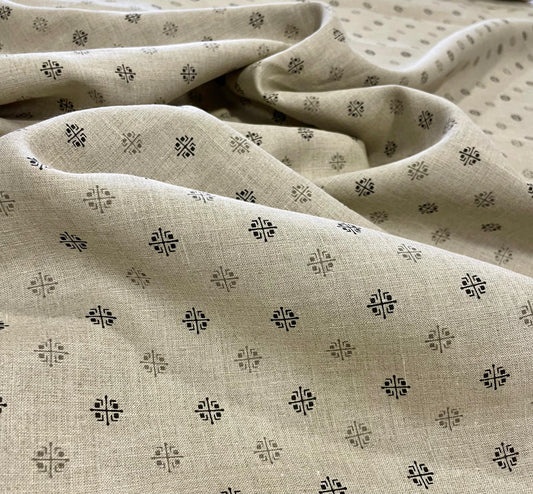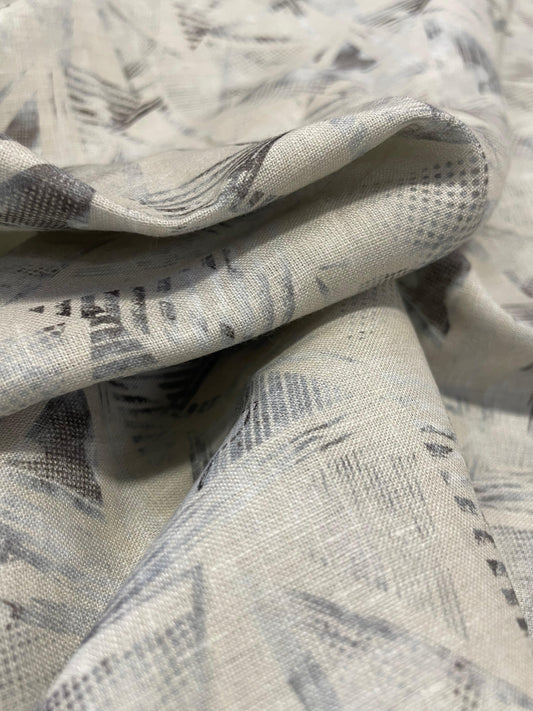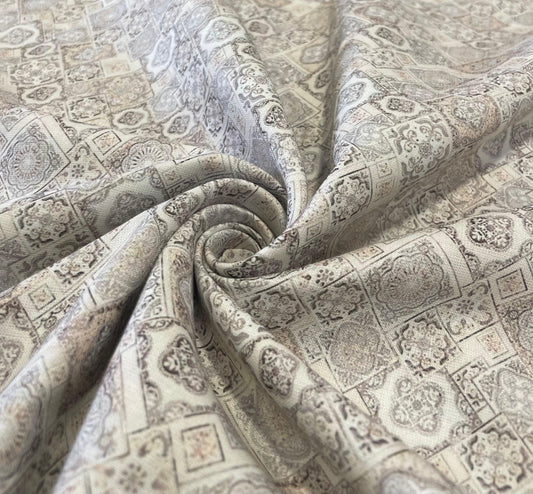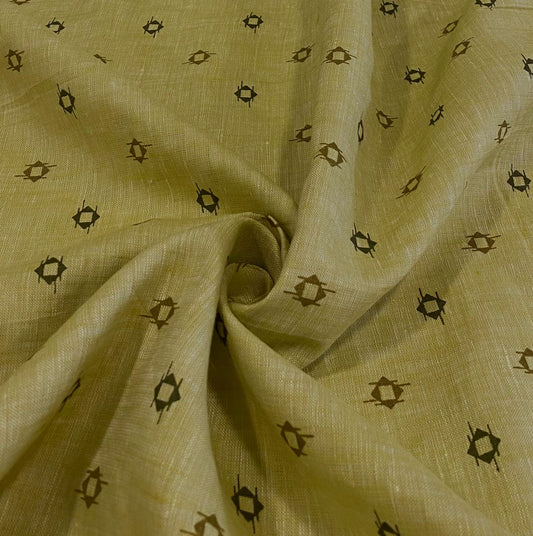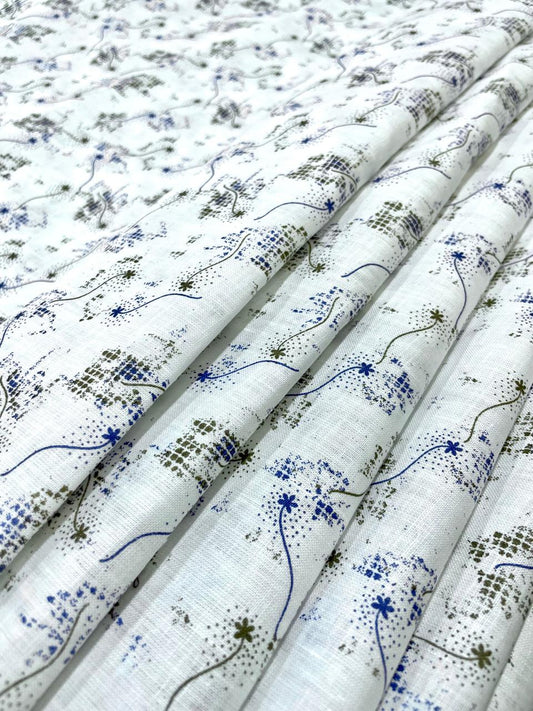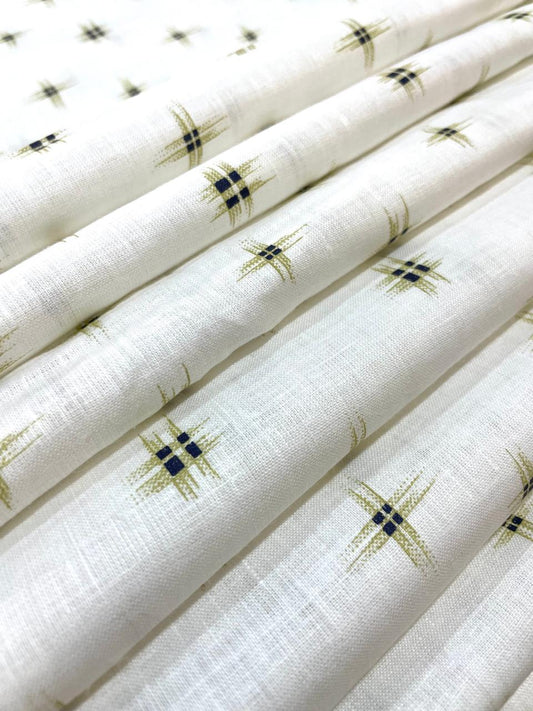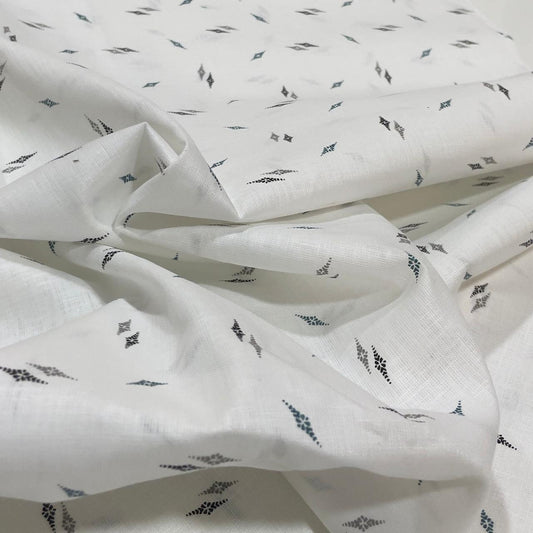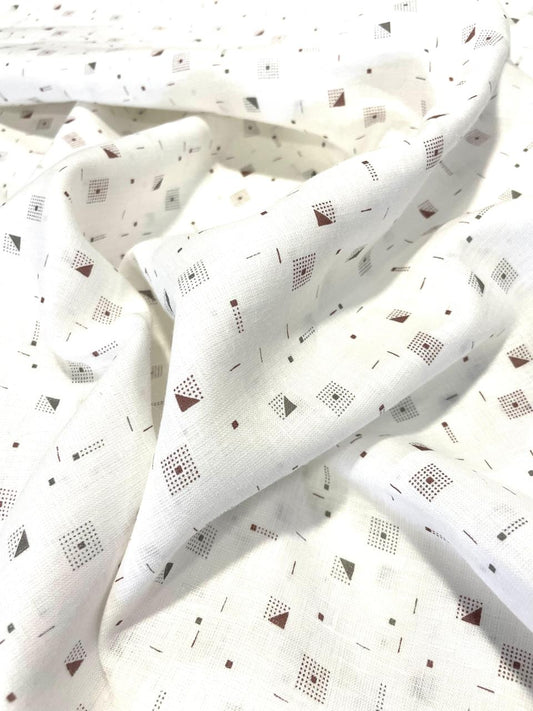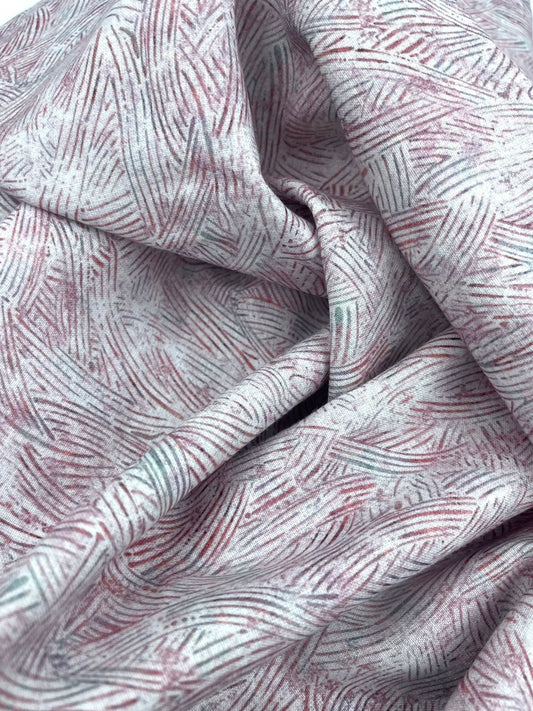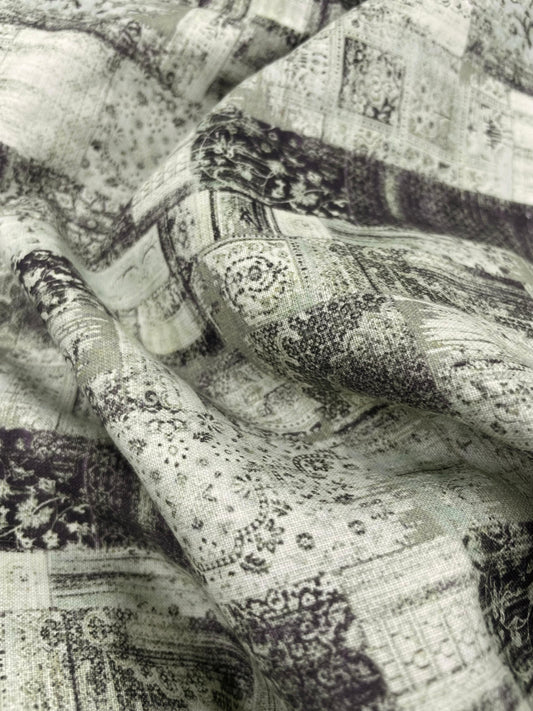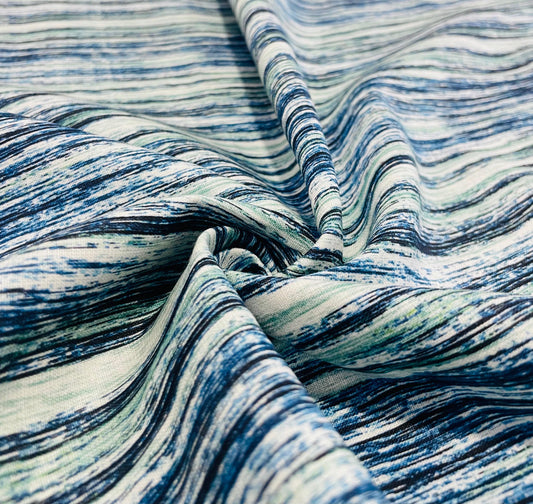
No Order Minimum | Exclusive Pricing | Free Shipping*
Proven bestsellers
-
Light Grey Allover Printed Fabric - Dyed Premium Linen Fabric CNC-LFJW-36207 (NEW)
Regular price From Rs. 1,799.00Regular priceUnit price / perRs. 1,348.00Sale price From Rs. 1,799.00 -
Grey Geometric Allover Digital Printed - Dyed Premium Linen Fabric BCH- 620364 (NEW)
Regular price From Rs. 1,589.00Regular priceUnit price / perRs. 1,349.00Sale price From Rs. 1,589.00 -
White Radiant Printed Fabric - Dyed Premium Linen Fabric BCH-001 (NEW)
Regular price From Rs. 1,589.00Regular priceUnit price / perRs. 1,348.00Sale price From Rs. 1,589.00 -
Greenish Yellow Printed- Dyed Premium Linen Fabric BCM- 12085
Regular price From Rs. 1,479.00Regular priceUnit price / perRs. 1,349.00Sale price From Rs. 1,479.00 -
White Dual-Shell Digital Printed - Dyed Premium Linen Fabric BCH-353 (NEW)
Regular price From Rs. 1,589.00Regular priceUnit price / perRs. 1,349.00Sale price From Rs. 1,589.00 -
White Allover Printed- Dyed Premium Linen Fabric LT-GMP-037(NEW)
Regular price From Rs. 1,379.00Regular priceUnit price / perRs. 1,349.00Sale price From Rs. 1,379.00 -
Blue Geometric Digital Printed - Dyed Premium Linen Fabric BCH-141
Regular price From Rs. 1,589.00Regular priceUnit price / perRs. 1,349.00Sale price From Rs. 1,589.00 -
White Allover Printed- Dyed Premium Linen Fabric LT-GMP-007(NEW)
Regular price From Rs. 1,379.00Regular priceUnit price / perRs. 1,349.00Sale price From Rs. 1,379.00 -
White Allover Printed- Dyed Premium Linen Fabric LT-GMP-14(NEW)
Regular price From Rs. 1,379.00Regular priceUnit price / perRs. 1,349.00Sale price From Rs. 1,379.00 -
White Multi Printed - Dyed Premium Linen Fabric CNC-LFWH-50963 (NEW)
Regular price From Rs. 1,779.00Regular priceUnit price / perRs. 1,349.00Sale price From Rs. 1,779.00
Shop our top categories
-

White Linen & Hemp
Premium white linen fabrics are high-quality textiles made from flax fibers that...
-

Linen Shirts
Linen shirts are lightweight, breathable garments made from natural flax fibers, offering...
-

Premium Men's White Linen Shirts
A premium white linen shirt is a high-quality garment made from linen...
-

Linen Solids
Linen Solids are chose for those seeking a classic and comfortable material...
-

Linen Suiting's
Linen suiting's fabrics stand out as a timeless and versatile choice for...
New arrivals
-
White Dual-Shell Digital Printed - Dyed Premium Linen Fabric BCH-353 (NEW)
Regular price From Rs. 1,589.00Regular priceUnit price / perRs. 1,349.00Sale price From Rs. 1,589.00White Dual-Shell Digital Printed - Dyed Premium Linen Fabric BCH-353 (NEW)
Regular price From Rs. 1,589.00Regular priceUnit price / perRs. 1,349.00Sale price From Rs. 1,589.00White Dual-Shell Digital Printed - Dyed Premium Linen Fabric BCH-353 (NEW)
Regular price From Rs. 1,589.00Regular priceUnit price / perRs. 1,349.00Sale price From Rs. 1,589.00 -
White/Pink Sierra Digital Printed - Dyed Premium Linen Fabric BCH- 620423 (NEW)
Regular price From Rs. 1,669.00Regular priceUnit price / perRs. 1,349.00Sale price From Rs. 1,669.00White/Pink Sierra Digital Printed - Dyed Premium Linen Fabric BCH- 620423 (NEW)
Regular price From Rs. 1,669.00Regular priceUnit price / perRs. 1,349.00Sale price From Rs. 1,669.00White/Pink Sierra Digital Printed - Dyed Premium Linen Fabric BCH- 620423 (NEW)
Regular price From Rs. 1,669.00Regular priceUnit price / perRs. 1,349.00Sale price From Rs. 1,669.00 -
Bespoke Brown Digital Printed - Dyed Premium Linen Fabric BCH- 62395 (NEW)
Regular price From Rs. 1,589.00Regular priceUnit price / perRs. 1,349.00Sale price From Rs. 1,589.00Bespoke Brown Digital Printed - Dyed Premium Linen Fabric BCH- 62395 (NEW)
Regular price From Rs. 1,589.00Regular priceUnit price / perRs. 1,349.00Sale price From Rs. 1,589.00Bespoke Brown Digital Printed - Dyed Premium Linen Fabric BCH- 62395 (NEW)
Regular price From Rs. 1,589.00Regular priceUnit price / perRs. 1,349.00Sale price From Rs. 1,589.00 -
Green Patina Pattern Digital Printed - Dyed Premium Linen Fabric BCH- 620417 (NEW)
Regular price From Rs. 1,589.00Regular priceUnit price / perRs. 1,349.00Sale price From Rs. 1,589.00Green Patina Pattern Digital Printed - Dyed Premium Linen Fabric BCH- 620417 (NEW)
Regular price From Rs. 1,589.00Regular priceUnit price / perRs. 1,349.00Sale price From Rs. 1,589.00Green Patina Pattern Digital Printed - Dyed Premium Linen Fabric BCH- 620417 (NEW)
Regular price From Rs. 1,589.00Regular priceUnit price / perRs. 1,349.00Sale price From Rs. 1,589.00 -
Blue Green Wavy Digital Printed - Dyed Premium Linen Fabric BCH- 620407 (NEW)
Regular price From Rs. 1,589.00Regular priceUnit price / perRs. 1,349.00Sale price From Rs. 1,589.00Blue Green Wavy Digital Printed - Dyed Premium Linen Fabric BCH- 620407 (NEW)
Regular price From Rs. 1,589.00Regular priceUnit price / perRs. 1,349.00Sale price From Rs. 1,589.00Blue Green Wavy Digital Printed - Dyed Premium Linen Fabric BCH- 620407 (NEW)
Regular price From Rs. 1,589.00Regular priceUnit price / perRs. 1,349.00Sale price From Rs. 1,589.00
Hemp Fabric? It's a type of textile material made from fibers extracted from the stalks of the hemp plant (Cannabis sativa). Both Hemp and Linen are natural fibers with unique characteristics, and each has its own set of advantages.
-
This fibers are known for their strength and durability. Hemp fabrics can withstand wear and tear and tend to become softer over time without losing their robustness, whereas linen, it may be slightly less robust than hemp. However, linen known for their longevity and ability to resist abrasion.
-
Hemp fibers have better natural moisture-wicking properties, helping to keep the skin dry and cool like Linen which also has the same benefits.
-
Hemp fabric has a textured feel that some people find appealing. It can be slightly coarse but tends to soften with each wash. Linen is generally smooth and has a crisp texture, offering a different tactile experience compared to hemp.
ESS FOUR
Useful Informations
Size Chart
SIZE CHART


Wash Care
Linen is a durable and breathable fabric that can last a long time if cared for properly. Here's a comprehensive guide to washing and caring for your linen clothes, complete with images for each step.
1.Pre-Wash Treatment
Inspect your linen clothes for stains. Pre-treat any stains with a gentle stain remover before washing.
2.Washing Linen Clothes
Hand Washing
-
Fill a Basin with Lukewarm Water: Add a small amount of mild detergent.
-
Submerge the Linen Garment: Gently agitate the water with your hands to distribute the soap.
-
Soak for 10-15 Minutes: Allow the garment to soak without excessive rubbing.
-
Rinse Thoroughly: Rinse in lukewarm water until all detergent is removed.
-
Gently Squeeze Out Water: Do not wring or twist the fabric.
Machine Washing
-
Use a Gentle Cycle: Set your washing machine to a gentle cycle with lukewarm water.
-
Mild Detergent: Add a small amount of mild detergent suitable for delicate fabrics.
-
Wash Separately: To avoid any color transfer.
4. Drying Linen Clothes
-
Air Dry Flat: Lay the garment flat on a clean, dry towel and reshape it.
-
Hang to Dry: Alternatively, hang your linen clothes to dry. Avoid direct sunlight to prevent color fading.
5. Ironing Linen Clothes
- Damp Ironing: Iron your linen clothes while they are still slightly damp for best results.
- Use a Medium to High Heat Setting: Linen can withstand higher temperatures. Use steam for a crisp finish.
6. Storing Linen Clothes
- Cool, Dry Place: Store linen in a cool, dry place to prevent mildew.
- Avoid Plastic Bags: Use breathable garment bags for long-term storage.
Following these steps will help keep your Linen clothes looking fresh and beautiful for many years.
Learn About Linen
Linen Fabric
Linen is a fabric that holds significant importance due to its various qualities and uses. Here are some key aspects that highlight the importance of linen:
-
Natural and Sustainable: Linen is derived from the flax plant, making it a natural and eco-friendly fabric. Flax is a resilient crop that requires less water and pesticides compared to other fibers like cotton. Linen production has a lower environmental impact, making it a sustainable choice.
-
Breathable and Cool: One of linen's remarkable qualities is its breathability. The fabric allows air to flow freely, making it ideal for warm weather. Linen garments help regulate body temperature and keep the wearer cool and comfortable.
-
Absorbent: Linen has excellent moisture-absorbing properties, capable of absorbing up to 20% of its weight in moisture without feeling damp. It quickly wicks away perspiration from the body, keeping the skin dry and preventing the growth of bacteria.
-
Durability: Linen is known for its strength and durability. It is two to three times stronger than cotton, making linen garments long-lasting and resistant to wear and tear. With proper care, linen items can maintain their quality and appearance for years.
-
Versatility: Linen is a versatile fabric that can be used to make a wide range of products. Apart from clothing like shirts, dresses, and suits, linen is also used for household items such as bedding, tablecloths, towels, and upholstery. Its versatility extends to both casual and formal settings.
-
Timeless Aesthetic: Linen has a timeless appeal and is often associated with a classic and sophisticated style. Its natural texture and slight wrinkles lend a relaxed yet elegant look. The fabric's versatility allows it to be used in various fashion trends and styles while maintaining its charm.
-
Hypoallergenic: Linen is hypoallergenic, making it an excellent choice for individuals with sensitive skin or allergies. It is less likely to cause skin irritations compared to synthetic fabrics.
Overall, At ESS FOUR Fabrics, we have perfected the art of linen production, ensuring that each fabric we create meets the highest standards of quality and craftsmanship.

Hemp Fabric
Hemp fabric is made from the fibers of the hemp plant (Cannabis sativa). It has gained importance and popularity for several reasons:
-
Sustainability: Hemp is an incredibly sustainable crop. It requires minimal water, pesticides, and synthetic fertilizers compared to many other crops. It can also be grown in various climates, reducing the need for long-distance transportation.
-
Durability: Hemp fabric is known for its durability and strength. It's more robust than cotton, which means it can withstand wear and tear over time, resulting in longer-lasting products.
-
Biodegradability: Like linen, hemp is biodegradable, which means it decomposes naturally and has a minimal environmental impact at the end of its life cycle.
-
Versatility: Hemp fabric is versatile and can be used for a wide range of products, including clothing, accessories, home textiles, and industrial applications. It can be blended with other fibers like cotton or silk to create unique textiles.
-
Breathability: Hemp fabric is breathable and has moisture-wicking properties, making it comfortable to wear in various weather conditions.
-
Hypoallergenic: Similar to linen, hemp is less likely to cause allergies or skin irritations, making it suitable for individuals with sensitive skin.
-
UV Resistance: Hemp fabric has natural UV resistance, which means it provides some level of protection against harmful UV rays from the sun.
-
Antimicrobial Properties: Hemp fibers have natural antimicrobial properties, helping to inhibit the growth of bacteria and fungi, contributing to freshness and odor control.
-
Historical Significance: Hemp has a long history of use in various cultures for textiles, rope-making, and paper production.
-
Sustainable Farming Practices: Hemp cultivation often involves organic and regenerative farming practices, contributing to soil health and biodiversity.
In summary, hemp fabric is important for its sustainability, durability, versatility, and comfort. It's gaining popularity as an eco-friendly alternative to other textiles, particularly as consumers and industries seek more sustainable and environmentally friendly options. Hemp's historical significance and its potential to reduce the environmental impact of textile production make it an important and valued fabric in today's world.

🌿 Exploring the World of Natural Fabrics: Hemp vs. Linen 🌿
In the world of sustainable textiles, two eco-friendly fibers often stand out: hemp and linen. Let's dive into the key differences between these natural wonders:
1. Plant Origins:
- Hemp derives from the Cannabis sativa plant, known for its resilience and minimal environmental impact.
- Linen, on the other hand, comes from the flax plant (Linum usitatissimum), also celebrated for its sustainability.
2. Fiber Characteristics:
- Hemp fibers are sturdy and coarse, making hemp fabric exceptionally durable.
- Linen fibers are finer and softer, offering a smoother feel against the skin.
3. Appearance and Texture:
- Hemp fabric has a rustic, textured look that exudes natural charm.
- Linen fabric boasts a subtle sheen and a more refined appearance.
4. Comfort and Breathability:
- Linen is the go-to for hot weather, thanks to its superb breathability and moisture-wicking properties.
- Hemp is breathable but may feel coarser, making it a choice for different weather conditions.
5. Sustainability Credentials:
- Both hemp and linen score eco-points for their minimal water and pesticide needs.
- Hemp often wins praises for its rapid growth and minimal environmental impact during cultivation.
Choosing between hemp and linen depends on your preference, project, and values. As we navigate the realm of sustainable fashion and lifestyle, understanding these distinctions empowers us to make informed choices. 🌱
What's your go-to natural fabric, and why? Let's start a conversation about sustainable choices Feel free to adapt this post to your style and add any personal insights you may have about hemp and linen.
Contact Us
For Support and Enquires Email us to- sales@essfour.in (24x7)
Customer Service Contact number: +919790279699
Address: 2/14, Sheriff Colony Extension Main road, Tirupur, TN
Subscribe to our emails
Be the first to know about new collections and exclusive offers.








